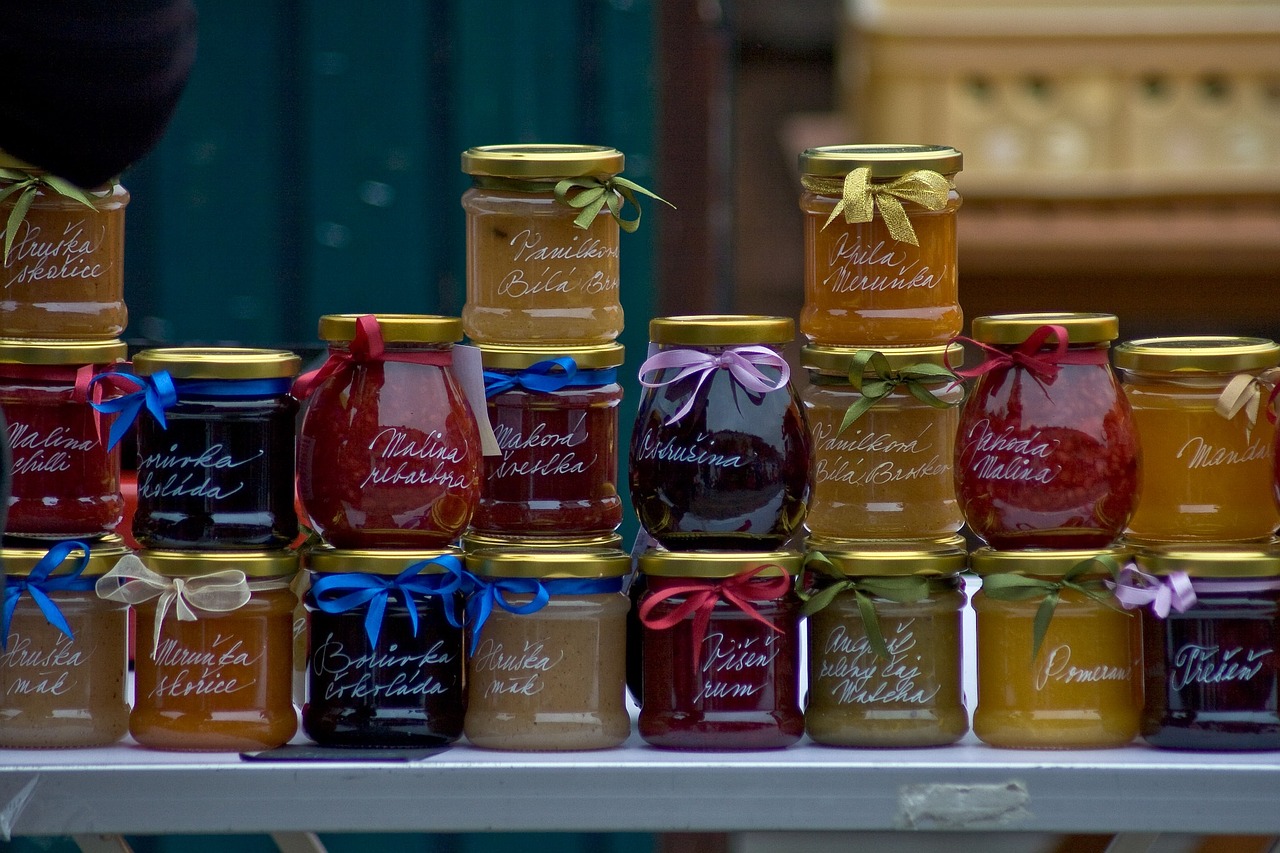. . .and marmalade. And fruit butter.
For this Difference Between, we can rely almost entirely on the basic definitions alone. Recipes.HowStuffWorks.com, Dictionary.com, BakingBites.com, and TheKitchn.com all have specific definitions on jams, jellies, and preserves that I will summarize here.
FineCooking.com, however, not only provides definitions, but also a picture, that, really, just says it all:
Let us start with jam. Jam is crushed fruit combined with sugar and (usually) pectin, cooked until it is almost totally pureed. Jam tends to be thicker than jellies, but not as thick as preserves.
Jelly is a fruit juice combined with gelatin, pectin, and sugar. It has a very soft, malleable touch to it – it has the most gel-like consistency of the three. After the cooking process, jelly is strained through something called a “jelly bag” to remove any solids, thus ensuring its smooth, elastic texture.
Preserves are the chunkiest of the bunch, containing pieces of fruit, or even the entire fruit (as with berries). The fruit is cooked with sugar until it is very tender and thick. Unlike jams and jellies, pectin is not often added.
To recap: Jam is nearly pureed, with teeny chunks of fruit still present. Jelly is basically completely pureed, and yet, is solid enough to hold its own shape; still, there are no chunks of fruit present. Preserves are the fullest, densest, of the three, with large chunks of fruit still in the mix.
As BakingBites.com says, “When you’re reaching for one to spread on a sandwich, it doesn’t matter which variety you choose as long as you like the flavor.”
What about baking, then? Is one preferable over the other for baking? Although jelly is often used as a filling for cakes or doughnuts, fruit preserves or jams are ideal for baking. As BakingBites.com puts it, “Not only do they typically pack the most fruit flavor, they both maintain their consistency very well even when baked.”
To briefly examine marmalade and fruit butters: The important element of marmalade is that is it citrus-based. Fruit butters, as the name suggests, are smooth and spreadable.
Marmalade is made usually from oranges – the peel as well as the fruit. According to Dictionary.com, the fruit and rind are suspended inside the jelly-like mixture.
Fruit butter is made from a slow cooking process until it reaches the right consistency. Some are thicker than others.
I tried making apple butter two or three years ago – that recipe is here – and unfortunately I wasn’t wild about it. It did help me use up a whole bunch of apples from apple picking, though (I’m not a big applesauce person).
However, since trying some awesome strawberry preserves recently I’ve been getting more into toast and fruit-type spreads, so I may give apple butter a chance again this year after apple picking – which is coming up soon!
The fiance and I recently had two great friends – a married couple with a two-year-old – move to Colorado. Among many other things, they gave us their perishables where I discovered this gem:
Did I mention one of them is Russian? I have no idea what that says, but darn is it good.

Comments
3 responses to “Difference between: jams and jellies (and preserves)”
Very interesting! I didn’t even realize that jams and jellies are different!
not realizing the difference between pectin and gelatin , I picked up gelatin to make some pear-grape jam.it looks ok and tastes ok but is very thick.my question is can I add more grape juice (from fresh grapes) recook the already cooked and sealed jam to make it thinner ?? or should I just give up and throw all of it away ?? thank u for any help.I’d rather not throw it away but will if you suggest I do.
Hi Colette,
I do believe you can add grape juice from fresh grapes to your jam to make it thinner.
It looks like both water and fruit juice can thin out jams. . .also, there’s a little bit of pectin in all fruits, usually in the rind, but grapes are actually listed as a high-pectin fruit. So that can’t hurt.
I also have a difference between on pectin and gelatin that might help:
http://erinnudi.com/2014/02/26/difference-gelatin-pectin/
Good luck!